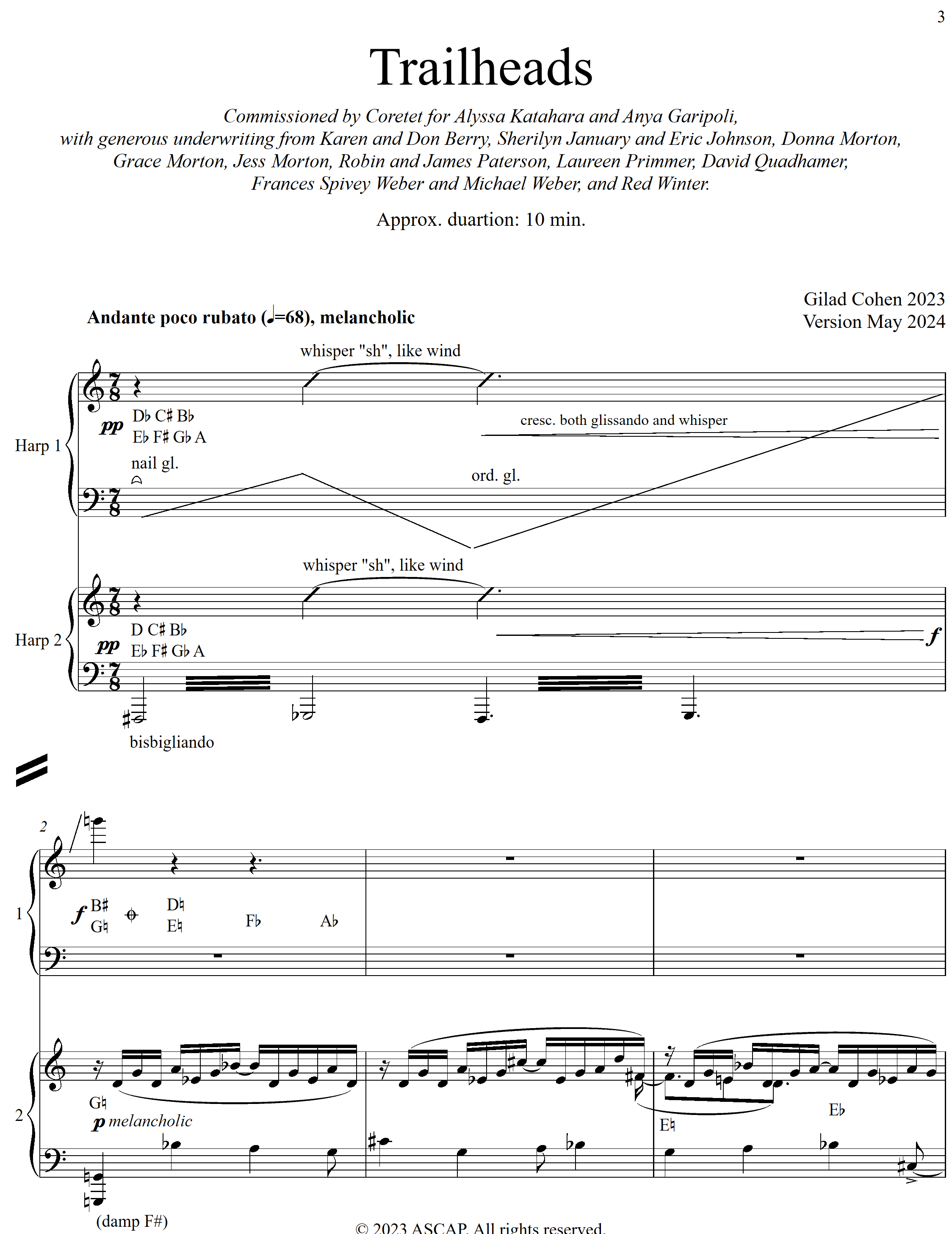Trailheads
For two harps (2023)
Length: 10 minutes
Commissioned by Coretet for Alyssa Katahara and Anya Garipoli, who also played the premiere in this video.
Score and parts are available below for performances starting June 15 2025.
About the piece
Harp can make some of the coolest sounds, textures, and grooves in the family of acoustic instruments. At the same time, it presents a series of challenges for the composer. First, harpists traditionally use only four fingers in each hand, which greatly limits the chordal and textural possibilities. Second, getting a big sound is not obvious and requires very careful approach to voicing. Third, the harp’s bass register lacks precision, especially in a large hall (a real bummer for bassline lovers). Fourth, its giant soundboard is a gift for composers who like musicians to drum on their instrument, but unfortunately most harpists have only two hands to divide between plucking and drumming. Lastly, its complex pedal arrangement limits its ability to play chromatically, forcing upon the harpist complicated pedal movements in order to expand beyond seven pitches.
Miraculously, all these issues disappear (or at least diminish) when we are faced with two harps instead of one. Suddenly we have 16 fingers to make sound with, and four hands with which to pluck, drum, and anything in between. Chords and basslines can now be doubled in numerous ways for making special sonorities and greater impact. Each harpist can employ a different pedal setting, together creating rich note combinations and minimizing the constant need for awkward foot dances.
Most importantly, a second harp is a companion. In Trailheads, I envision two harps making a journey through a crowded forest. They alternate in taking the lead, often echoing each other’s footsteps. Sometimes they converse quietly while slowly chewing the grass. At the end of each path they pause, lost in thought, before decisively moving on to the next one. Until, suddenly, they start racing. Head-to-head, stumbling on their fourteen pedals, they run and run, breathing heavily, on and on without a stop. They only come to a halt when they reach a peculiar clearing: the place where all harps come to a rest, where the only sound is that of a dying low string.
